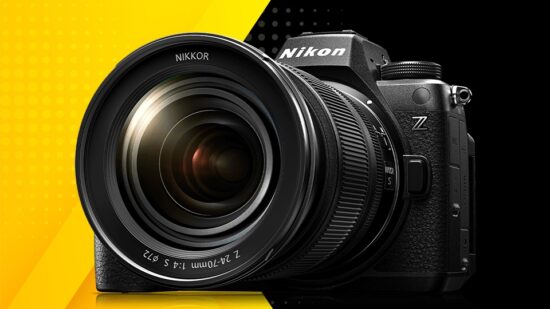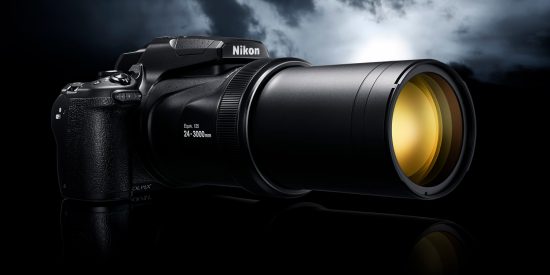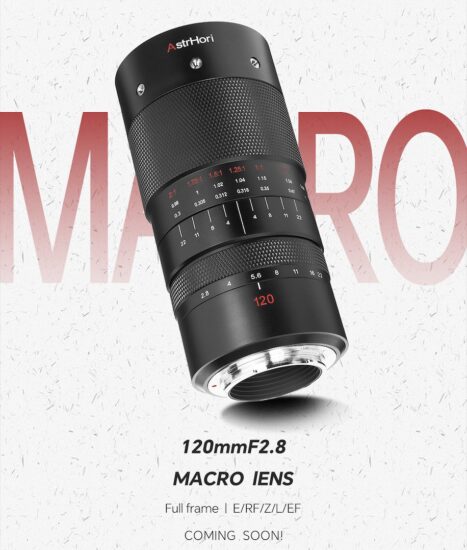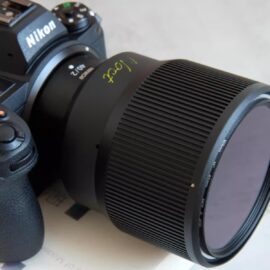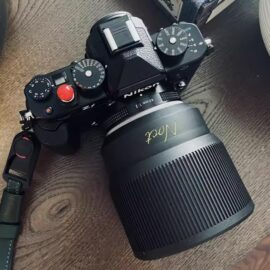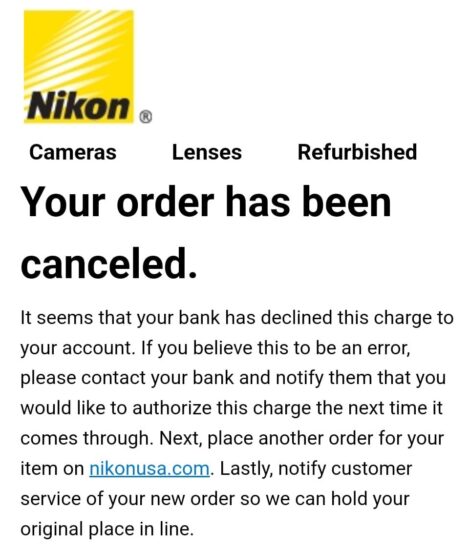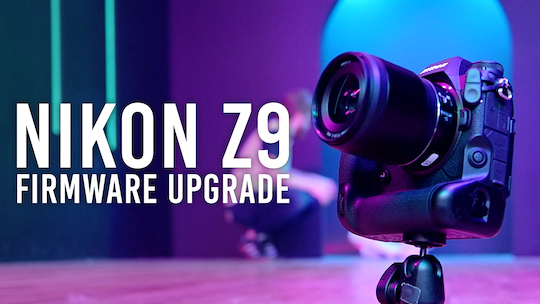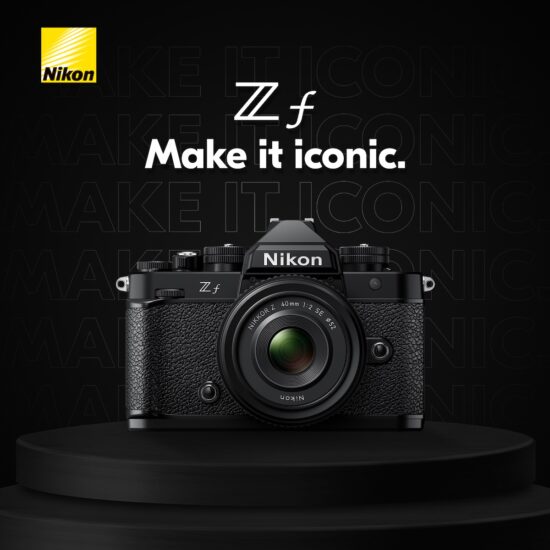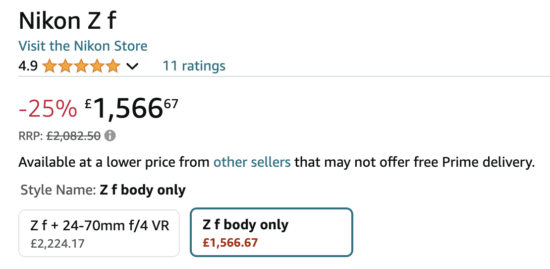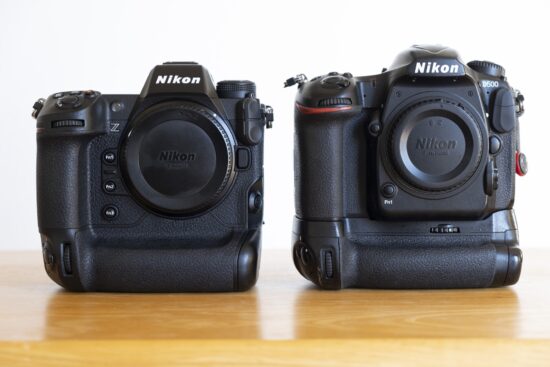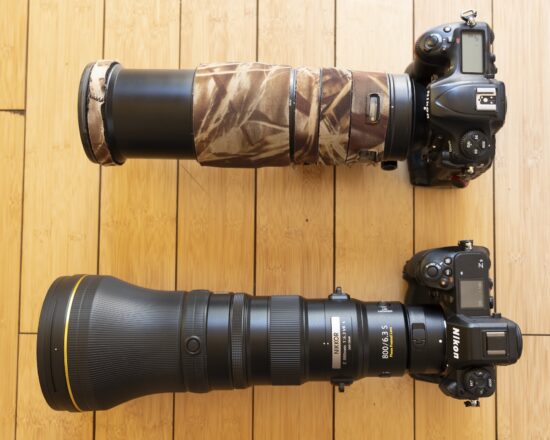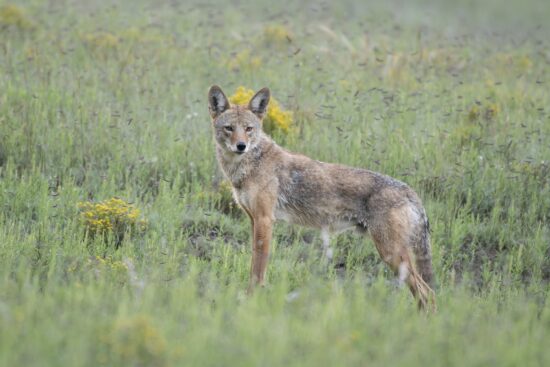

30 days with the Nikon Z9 and Nikkor Z 800mm f/6.3 VR S lens by Bill Ferris – a wildlife/bird photographer in northern Arizona who recently upgraded from a Nikon D500/Nikkor 200-500 combo to a Nikon Z9/Nikkor 800mm PF system:

A coyote and newborn elk calf face off in a northern Arizona meadow on a summer’s day. (Nikon Z9 with 800mm PF at f/6.3, 1/800, ISO 320)
OK, full disclosure…it’s not been exactly 30 days. Federal Express delivered the camera, lens and accessories on May 7. Today’s date is June 10 and my most recent shoot with the new kit was yesterday, June 9. But what’s a couple of days amongst friends?
Before getting into my early impressions, I want to share the backstory on the photography I do and what led me to purchasing this system. I’m a wildlife and bird photographer living in Flagstaff, Arizona. Phoenix and Tucson are farther south in the desert where the high will be about 110 °F (43 °C) today. Flagstaff is on the Colorado Plateau at 7,000 feet (2133 meters) elevation. A typical June day has a high in the mid-eighties.
I’m also a long time Nikon user. Since 2018, I have been shooting with a Nikon D500 and Nikkor 200-500mm f/5.6E VR. I’m on my second copy of the 200-500. Nikon replaced the first under warranty, due to multiple service trips to repair a failed zoom mechanism.
That combo has served me, well. The D500 has the DX version of the D5’s 20 MP sensor and autofocus system, a 10 fps burst rate, an effectively bottomless buffer, professional build quality and controls. The 200-500 is a consumer zoom lens. It was released in the fall of 2015 as Nikon’s response to the Tamron and Sigma 150-600mm f/5-6.3 zoom lenses that were popular with a growing segment who enjoy nature and wildlife photography.
Being a photographer, I naturally found shortcomings in my gear. The first to emerge was the marginal low-light performance of the kit. With a maximum aperture of f/5.6, the 200-500 was affordable, sharp wide open but challenged in the light-gathering department. Exotic prime and zoom lenses in the same focal length range are all at least a full stop faster. The D500 was equally challenged in that area. It’s APS-C sensor captures one-stop less light than a full-frame body working with the same exposure.
I could navigate around these issues. I worked hard at improving my field craft and getting closer to subjects without being a disturbance to them. The closer you are, the better an animal fills the frame and the more light your camera captures from them. I invested in a quality Benro tripod and gimbal head system. Combined with the 200-500’s excellent vibration reduction (VR), I was able to use shutter speeds as slow as 1/30-second and still freeze the movement of grazing animals in early morning twilight. Wide open at 1/30 is a recipe for sucking as much available light as possible from an early morning scene.

A dew-soaked coyote pauses briefly at the edge of the Grass Flat Tank meadow. (Nikon D500 w/ Nikkor 200-500mm f/5.6E at 500mm, f/5.6, 1/30, ISO 1600)
Read More »
